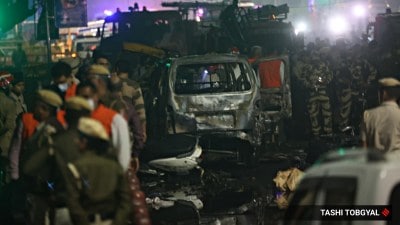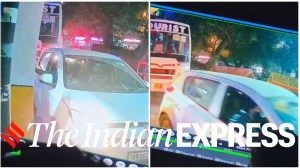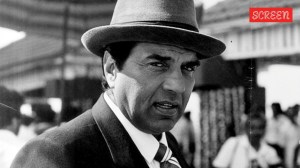An experiment of SORTS
Saibal Mitra,known for his documentary In the Land of Chhinnopatro and the thriller Dronacharya,gets talking about his soon-to-be-released film Hanankaal
Saibal Mitra,known for his documentary In the Land of Chhinnopatro and the thriller Dronacharya,gets talking about his soon-to-be-released film Hanankaal
Is Hanankaal a digital film?
Yes. It is being produced by Rose Valley and presented by Goutam Ghose. It is a part of a series of low-budget digital films that will be released commercially. This is actually an experiment to see if a low-budget film with out-of-the-box subject targeted at a discerning audience can succeed in the market. There are other filmmakers who will gradually make films under this project.
In your earlier film,Songshoy,you explored the dilemma of young widows with little children. What are you dealing with in Hanankaal?
In Hanankaal,I have tried to deal with the concept of the clash of civilisation vis-à-vis position of terrorism and the war thereon within the sphere of the family. The word hanan means to kill and Hanankaal means time of killings,where I am trying to portray the disturbing times we live in with newspaper headlines and television news channels flashing news of killings all the time.
How did you get the idea to make a film on this subject?
Hanankaal is a short story by Samaresh Basu written during his last days. When I got the offer from Gautamda (Ghose) to direct a movie for his series of digital films,I wasnt sure about what subject I should choose. Gautamda gave me full freedom. We just had a brief discussion. When I narrated the story to him,he easily understood the possibility of a film out of the story. I was looking for a story which would help me explore whether the whole issue of war on terror/terrorism is a fight between fundamentalists and the liberals or whether it is a clash of culture and civilisation as some are arguing. The clash of civilisations is definitely my focus of interest.
What is the story of Hanankaal?
The story is about Paromita and Arup who meet in a chat room and get married. Arup has a high-flying job as a television journalist in a leading news channel and hardly has enough time to devote to his beautiful wife. But Paromita is not affected because she is too busy setting up her new home in Arups old three-room apartment. She works in the sales department of a magazine. Once,when Arup leaves the city on an assignment for a fortnight,Paromita redesigns the entire flat differently – from the colour on the walls to the furniture,the utensils,everything. Arup,usually a reserved man,is surprised. Then strange things begin to happen. One night,the dinner is scattered right across the table. Paromitas favourite plants are uprooted from their pots and strewn across the front door. A beautiful vase is smashed to smithereens. The sofa furnishing is slashed into bits. Who is doing all this? There is no one in the house except Paromita and Arup,the daily help Razia and the dog Lepchu. Who is the perpetrator behind these incidents? The movie is essentially about this.
Have you taken liberties with the original story?
Yes,I have added another layer of story to what Basu had written. It is about two lifestyles/cultures of two different characters. This clash of culture of two individual transcends gradually to the clash of civilisations (West Vs East) of the present- day world. This new layer has been added to the original storyline to fit into the contemporary situation of conflict on all fronts across India.
You have picked relatively-unknown faces such as Aparajita Ghosh-Das from television and Debshankar Haldar from theatre. Is there any specific reason?
Yes,I specifically chose Aparajita and Debshankar for the lead roles. With her fair complexion,Western looks and lean structure,Aparajita fit neatly into the slot I created for her. In the same way,Debshankar has a dusky complexion and has typically Indian looks and attitude. This was needed to represent the two cultural representations we are looking at. Debshankar is also a stalwart in Bengali theatre today. He rarely does films. Aparajita is a very popular face on television. She played an important role in my telefilm Dronacharya.
You have also introduced a Muslim character in Hanankaal. What prompted you to do that?
The Muslim character was not there in the original story. I added it while adding the new layer to the story. The name of the character is Alam. He is a secular Muslim with a Hindu wife. He has a Leftist background and is ex-member of Indian Peoples Theatre Association (IPTA). The story is set within the contemporary time- frame spread over a span of seven to eight months. The entire setting is in Kolkata.
Music always plays a key role in your films. Is it the same case with Hanankaal?
Tejendra Narayan Majumdar,who has also scored the music in most of my films,has composed the music for this movie too. I have used renowned Bengali poet Premendra Mitras poetry in Hanankaal. My friend Sugato Hazra has also penned a poem for this film.





- 01
- 02
- 03
- 04
- 05


























